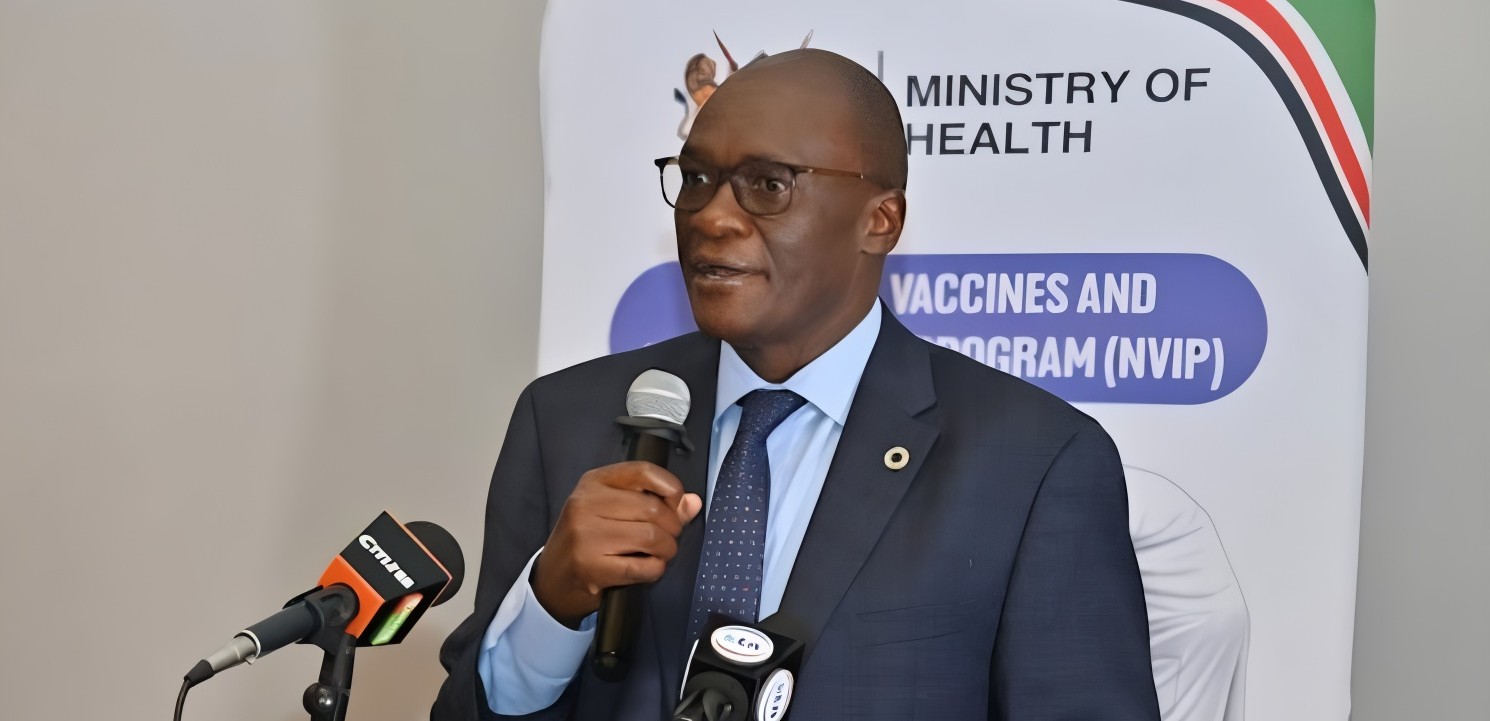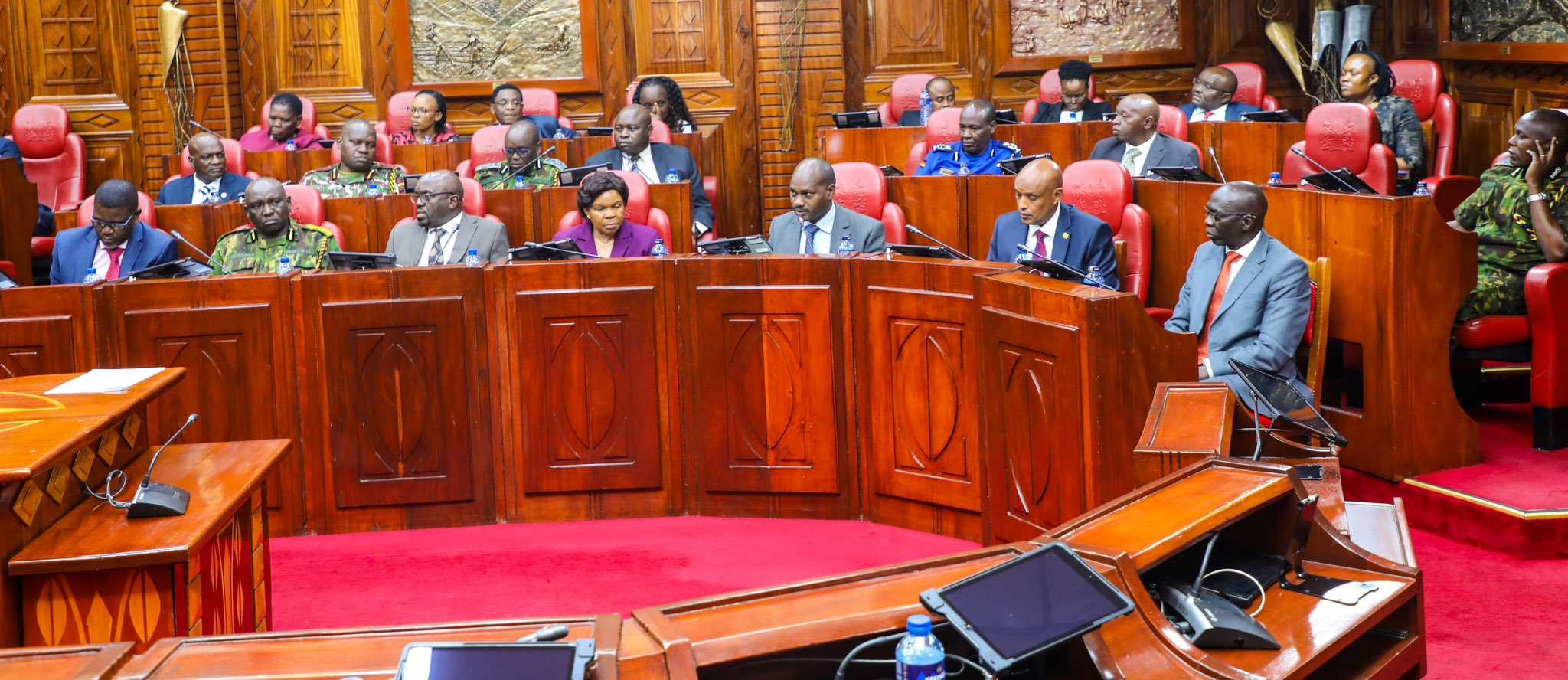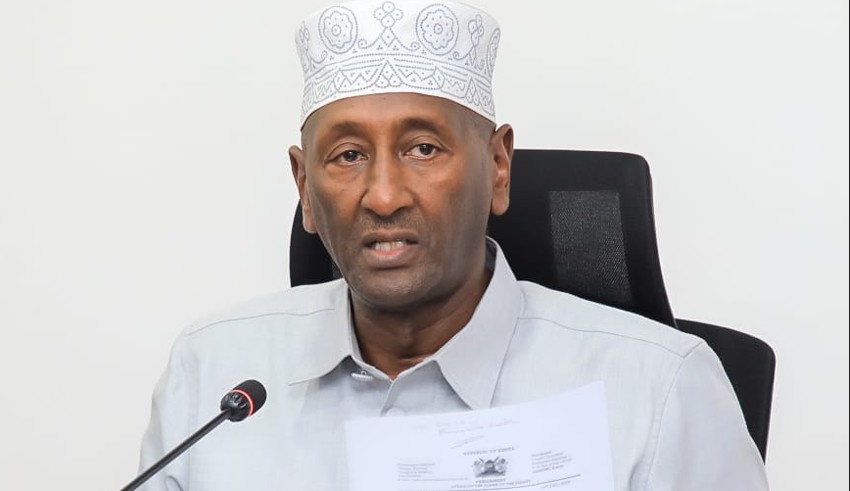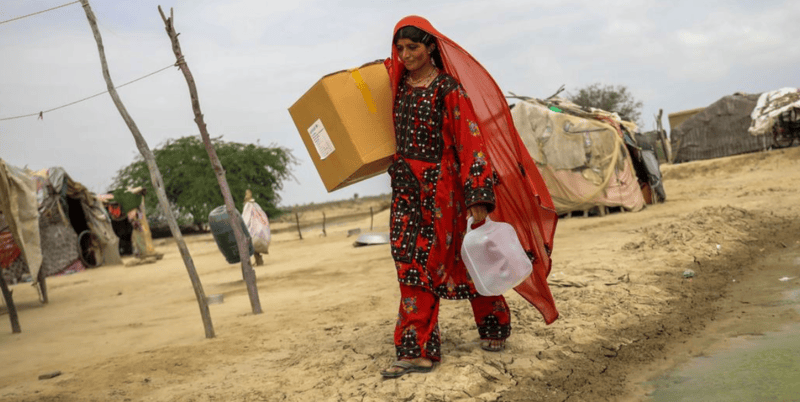Sudan is now confronting its most severe food security crisis on record
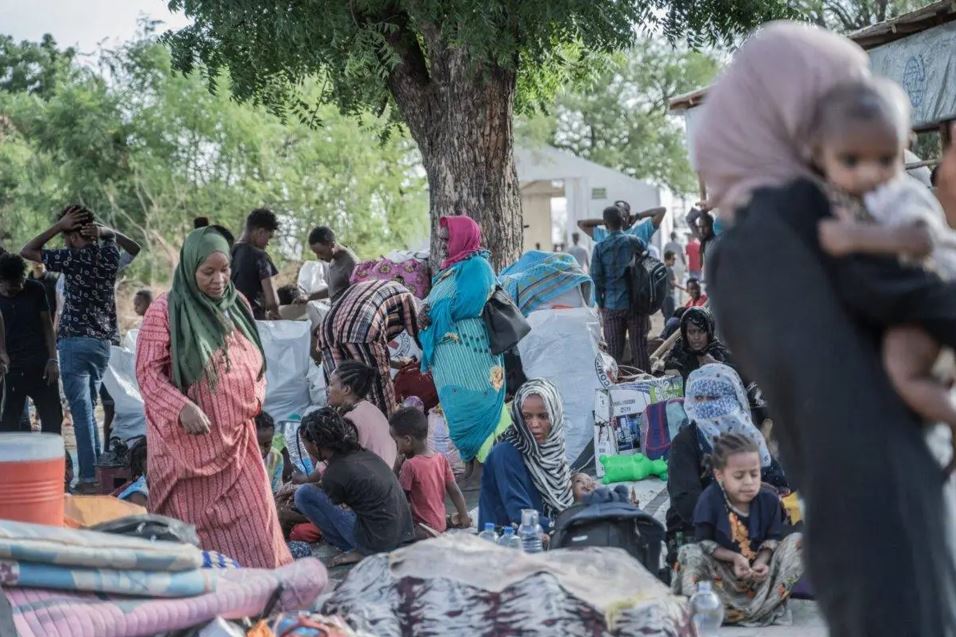
There is also a high risk of famine in multiple regions if immediate action is not taken. Famine is a severe and widespread lack of food that leads to extreme hunger, malnutrition and increased mortality in a population.
After 14 months of escalating internal conflict, Sudan is now confronting its most severe food security crisis on record. The latest situation report, released on 27 June, reveals a grim picture: more than half the population of 47.2 million is facing acute food insecurity. This signifies severe lack of food, high malnutrition and starvation leading to death.
There is also a high risk of famine in multiple regions if immediate action is not taken. Famine is a severe and widespread lack of food that leads to extreme hunger, malnutrition and increased mortality in a population.
More To Read
- IGAD reveals Kenya among six member countries where famine risks continue to rise
- Sudan's Central Bank bans private gold sales, becomes sole legal exporter
- Sudan conflict: AU, IGAD support three-month truce and inclusive civilian transition plan
- President Ruto backs UN peace efforts in Sudan, urges warring sides to end violence
- Over 13 million Sudanese children out of school amid ongoing conflict
- US, Saudi Arabia, UAE and Egypt call for Sudan truce
Food insecurity is measured using the widely accepted five-stage Integrated Food Security Phase Classification (IPC). The five phases range from “minimal” (people have enough food) through “stressed”, “crisis” and “emergency” to “famine” (extreme lack of food, starvation, very high death rates). This scale is intended to help governments and other humanitarian actors quickly understand a situation and take action.
Sudan’s deteriorating situation stems from an escalation in conflict and organised violence among Sudanese armed factions in the civil war that started in April 2023. This has also made the work of monitoring the food crisis particularly hard. The IPC’s technical working group for Sudan has faced huge challenges in updating its assessment analysis. These include security threats, lack of physical access, and data gaps in hotspot areas.
Nonetheless, in March, it published an alert about the situation and the urgent need for action to prevent famine. The new analysis, conducted between late April and early June, confirms the worst fears.
We are agricultural economists with more than 50 years of research between us. Our recent work includes Famine in Gaza, questions for research and preventive action and Food security and social assistance in Sudan during armed conflict. It is our view that, with no end to the conflict in sight and difficulties to provide humanitarian assistance, the prospects are dire for tens of millions in Sudan.
Rapidly rising acute food insecurity
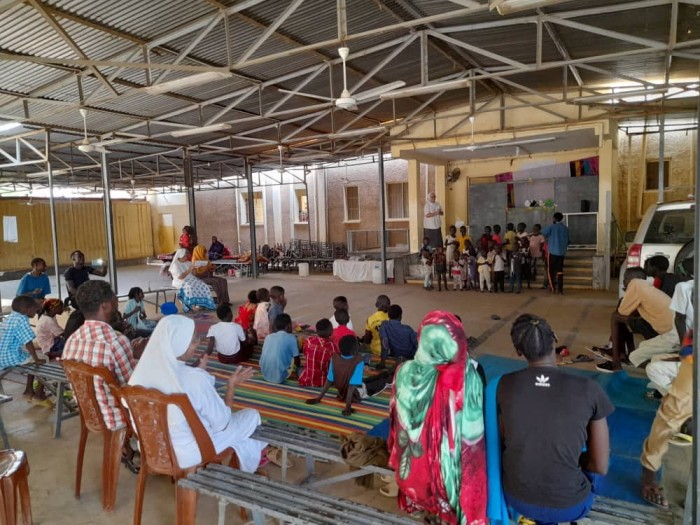 Refugees attend an event at "Dar Mariam" a Catholic church and school compound in al-Shajara district, where they took shelter, in Khartoum, Sudan, in this undated handout picture. (Photo: Father Jacob Thelekkadan/Handout via REUTERS)
Refugees attend an event at "Dar Mariam" a Catholic church and school compound in al-Shajara district, where they took shelter, in Khartoum, Sudan, in this undated handout picture. (Photo: Father Jacob Thelekkadan/Handout via REUTERS)Refugees attend an event at "Dar Mariam" a Catholic church and school compound in al-Shajara district, where they took shelter, in Khartoum, Sudan, in this undated handout picture. Father Jacob Thelekkadan/Handout via REUTERS.
In its December 2023 analysis of the situation, the IPC projected that 17.7 million people (37% of the population) could face crisis-level conditions or worse between October 2023 and February 2024. Of these, 4.9 million were in food “emergency” conditions. The situation has since worsened dramatically.
During April and May nearly 21.3 million people across Sudan were estimated to face high levels of acute food insecurity. These included 153,000 people in famine-like conditions, the most severe phase of food insecurity classification. It’s plausible that between June and September 2024, the number of people facing crisis-level acute food insecurity will rise to 25.6 million. This is a 45% increase from the previous projection period (October 2023 to February 2024).
This scenario anticipates:
- Ongoing conflict, particularly in North Darfur, West and South Kordofan, Khartoum, and Al Jazirah states, leading to increased displacement, with heavily populated south-eastern states also being affected.
- Economic shocks, due to conflict-related disruptions, resulting in a contracting economy, rising inflation and below-average food production.
- Market disruptions, particularly in key trade hubs, worsening food shortages and price hikes.
- Restricted humanitarian access, especially in conflict-affected areas, and above-average rainfall which may cause flooding, further complicating food security but offering some agricultural opportunities in accessible regions.
- An elevated risk of famine during the same period for 14 areas in nine states. Greater Darfur, Greater Kordofan, Al Jazirah states, and parts of Khartoum are the most affected areas.
- The IPC projects that there could be some improvement in food security conditions during the harvest season from October 2024 to February 2025. As a result, the total of those facing crisis-level or worse food insecurity could fall to about 21 million people. But this will still leave 109,000 people under famine-like conditions.
Key drivers
The main driver of this rapidly worsening situation is the intensification of Sudan’s conflict and insecurity situation. The conflict has restricted movements of goods and services, disrupted markets, and hindered agricultural production and humanitarian access, thus severely reducing the availability and access to food for millions of Sudanese.
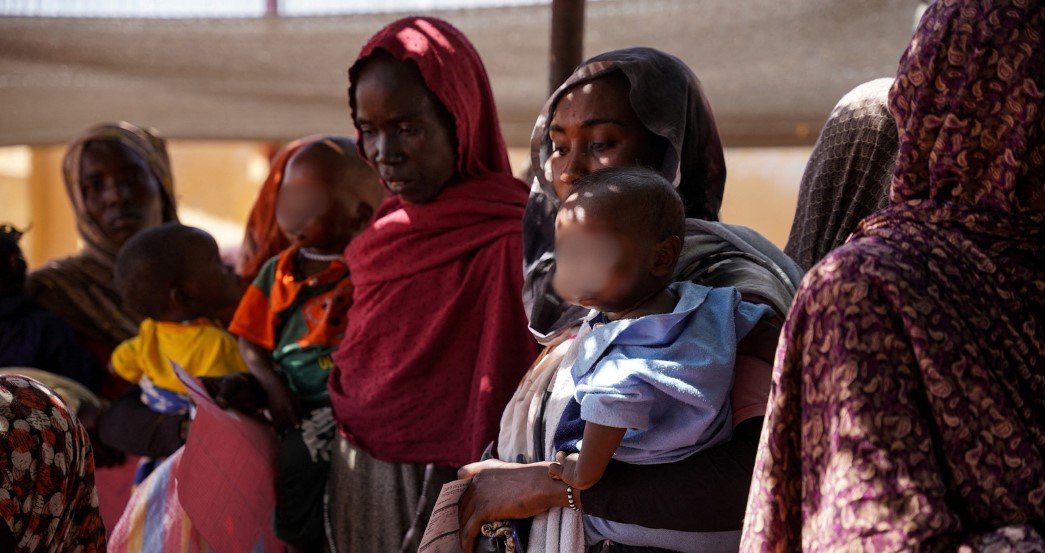 A handout photograph, shot in January 2024, shows women and babies at the Zamzam displacement camp, close to El Fasher in North Darfur, Sudan. An assessment by Medecins Sans Frontieres (Doctors Without Borders) in January found that at the camp, which is home to an estimated 400,000 people, two babies were dying every hour. Nearly 40% of children aged six months to two years old were malnourished, the group found. MSF/Mohamed Zakaria/Handout via Reuters)
A handout photograph, shot in January 2024, shows women and babies at the Zamzam displacement camp, close to El Fasher in North Darfur, Sudan. An assessment by Medecins Sans Frontieres (Doctors Without Borders) in January found that at the camp, which is home to an estimated 400,000 people, two babies were dying every hour. Nearly 40% of children aged six months to two years old were malnourished, the group found. MSF/Mohamed Zakaria/Handout via Reuters)A handout photograph, shot in January 2024, shows women and babies at the Zamzam displacement camp, close to El Fasher in North Darfur, Sudan. An assessment by Medecins Sans Frontieres (Doctors Without Borders) in January found that at the camp, which is home to an estimated 400,000 people, two babies were dying every hour. Nearly 40% of children aged six months to two years old were malnourished, the group found. MSF/Mohamed Zakaria/Handout via Reuters)
The food crisis is not a new phenomenon. It is part of a recurring syndrome of triple crises comprising protracted civil conflicts, climate shocks and economic instability. Beside the ongoing war between the Sudanese Armed Forces and the Rapid Support Forces, the country has a recent history of severe civil conflicts. These include Africa’s longest civil war (1983-2005) and the Darfur crisis (2003) among others.
These have triggered economic woes, including skyrocketing prices of basic commodities, severely eroding food access for much of the population.
Additionally, climate shocks such as prolonged droughts and severe flooding have devastated crop yields and livestock. The national cereal production in 2023 was estimated to be 46% below levels of the previous year.
The conflict has forced the displacement of more than 10 million people. Sudan now counts 10.1 million internally displaced persons and 2.2 million refugees. This makes it the country with the highest number of forcibly displaced people in the world. The internally displaced persons and refugees have lost their livelihoods and are largely dependent on humanitarian assistance. As the conflict is hampering access to such assistance, these are among the people most at risk of famine.
Economic conditions have recently worsened further. Disrupted supply chains and production capacity have pushed up already very high prices of food and all other basic necessities. In some areas of the country prices of staple commodities have tripled since May compared with the most recent five-year period average.
Can widespread famine be averted?
To avert a famine, a de-escalation of the conflict is needed to create better security conditions and put an end to the current disruptions in markets, supply chains and distribution channels. The IPC working group on Sudan also makes these recommendations for immediate action:
Restore humanitarian access so that humanitarian agencies can get safe and sustained access to areas with populations most in need.
Substantially increase the amount of food assistance and other essential supplies to prevent loss of life and support livelihoods.
Scale up nutrition interventions, particularly for vulnerable groups such as children and pregnant women.
Support livelihoods, including distribution of agricultural inputs and creating safe zones for farming.
It is crucial for the international community to respond swiftly to avert a humanitarian disaster in Sudan.
Top Stories Today



